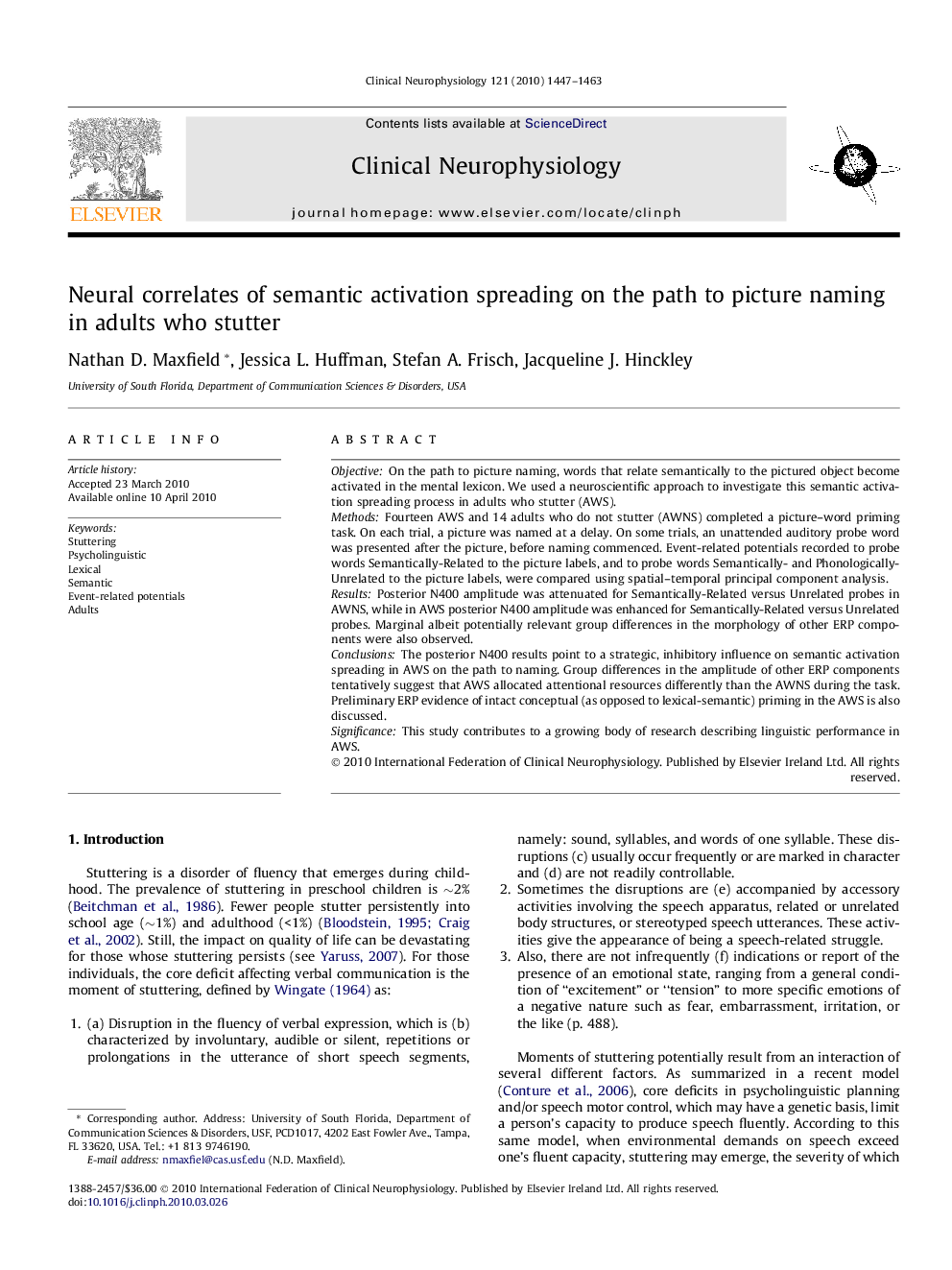| Article ID | Journal | Published Year | Pages | File Type |
|---|---|---|---|---|
| 3045591 | Clinical Neurophysiology | 2010 | 17 Pages |
ObjectiveOn the path to picture naming, words that relate semantically to the pictured object become activated in the mental lexicon. We used a neuroscientific approach to investigate this semantic activation spreading process in adults who stutter (AWS).MethodsFourteen AWS and 14 adults who do not stutter (AWNS) completed a picture–word priming task. On each trial, a picture was named at a delay. On some trials, an unattended auditory probe word was presented after the picture, before naming commenced. Event-related potentials recorded to probe words Semantically-Related to the picture labels, and to probe words Semantically- and Phonologically-Unrelated to the picture labels, were compared using spatial–temporal principal component analysis.ResultsPosterior N400 amplitude was attenuated for Semantically-Related versus Unrelated probes in AWNS, while in AWS posterior N400 amplitude was enhanced for Semantically-Related versus Unrelated probes. Marginal albeit potentially relevant group differences in the morphology of other ERP components were also observed.ConclusionsThe posterior N400 results point to a strategic, inhibitory influence on semantic activation spreading in AWS on the path to naming. Group differences in the amplitude of other ERP components tentatively suggest that AWS allocated attentional resources differently than the AWNS during the task. Preliminary ERP evidence of intact conceptual (as opposed to lexical-semantic) priming in the AWS is also discussed.SignificanceThis study contributes to a growing body of research describing linguistic performance in AWS.
